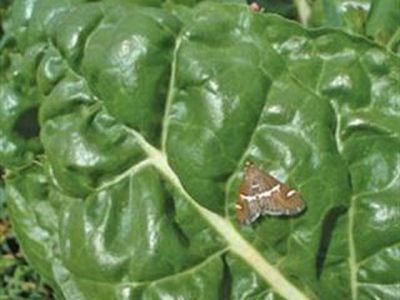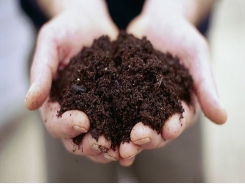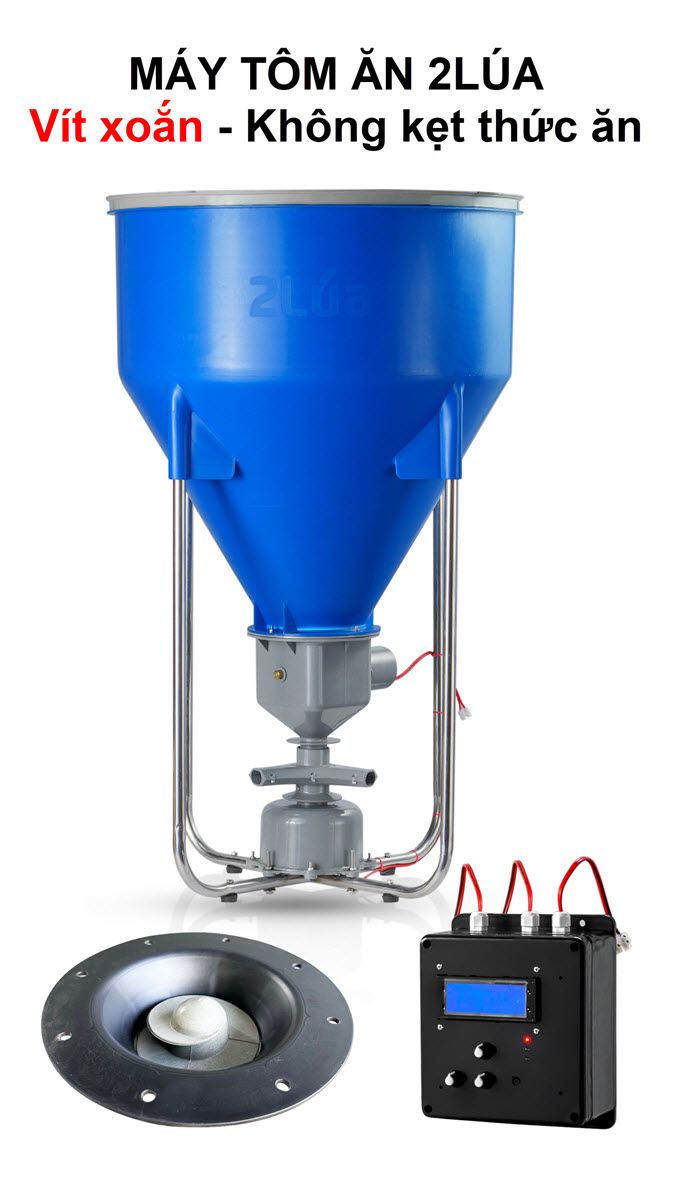Dealing with Hawaiian beet webworm the biological way

The Hawaiian beet webworm is a caterpillar that attacks beet and Swiss chard. The moth’s delta-shaped wings are brown with white stripes.
A Hawaiian beet webworm moth on a Swiss chard leaf. Photo: Bill Kerr
It’s very distinctive – yet few farmers associate it with the caterpillars which feed on the leaves. The complete life cycle takes about a month, and eggs are laid singly on the underside of the leaves. Although it can do a lot of damage, this pest occurs very sporadically. Which usually means a very good biological mechanism is keeping it under control.
This is the see-saw effect so often encountered in integrated pest management (IPM) that’s been mentioned before. Pest numbers plummet thanks to the predator. But with the parasitoid’s host now in short supply, it has no means of reproduction, and so the parasitoid’s numbers also begin to decline. This then gives the pest another shot at attacking your crops.
Control agent
The main biological control agent for the Hawaiian beet webworm is a parasitoid wasp which injects an egg into the feeding caterpillar. It’s fairly easy to spot as it isn’t as minute as those which control leaf miner. Nevertheless, some patient observation will still be required. Find where caterpillars are feeding and spend a few minutes scanning the leaves. You should soon see the little black wasps searching for a host. You’ll also find small white cocoons on the foliage.
If these parasitoids are present, you need to compare the amount of damage being done by the caterpillars with the number of parasitoid wasps present to see if the latter are getting the upper hand. This takes a little experience, but if you persevere you’ll soon be able to gauge ‘battle conditions’ as well as any general. If in doubt, however, use a safe biological product such as Di-Pel (Bacillus thuringiensis). This will bring the caterpillar numbers down without doing any harm to the parasitoids.
If you’re certain no parasitoids are around, you can use a harsher product – but, as we’ll see, this situation is likely to be extremely rare. Very often beet and spinach are planted in succession. If you take the necessary precautions to preserve the parasitoids on the older beet planting, they’ll move to the younger planting and continue controlling the Hawaiian beet webworm.
Swiss chard
These wasps are really effective and can save you spraying costs. Harsh chemicals might be more effective in reducing the caterpillar population, but will certainly eliminate the beneficial insects as well, making repeat sprays likely. Swiss chard, meanwhile, is harvested on a regular basis, so rather avoid using harsh products on this crop by ‘cultivating’ biological control agents in the initial stages of crop growth.
Thereafter there should be no need for spraying. Quite a few host plants in the wild ‘support’ both the caterpillar and parasitoid. Amaranthus spp. is one, and I strongly suspect that Chenopodium spp., which is closely related to beet and Swiss chard, is another.
Also present
However, my point is, I believe you’ll rarely encounter this pest without the parasitoid also being present. So my advice is to always use a suitable biological product when you find these caterpillars in your crop. Then, as we’ve said, examine the crop. If, over a period of time, you spot very little damage, you needn’t even bother looking for the wasps. The absence of noticeable damage is evidence enough the parasitoids are doing their job.
Có thể bạn quan tâm
Phần mềm

Phối trộn thức ăn chăn nuôi

Pha dung dịch thủy canh

Định mức cho tôm ăn

Phối trộn phân bón NPK

Xác định tỷ lệ tôm sống

Chuyển đổi đơn vị phân bón

Xác định công suất sục khí

Chuyển đổi đơn vị tôm

Tính diện tích nhà kính

Tính thể tích ao hồ




 Growing Roses from Cuttings
Growing Roses from Cuttings  How to grow tomatoes
How to grow tomatoes